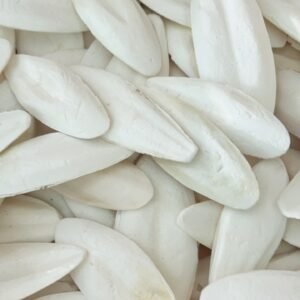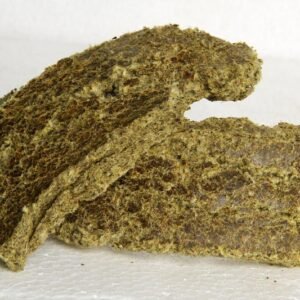Tapioca residue powder
Tapioca residue is a by-product of processing cassava starch from cassava tubers. Cassava residue contains more starch (about 60%) but poor in protein.
Therefore, when using cassava residue, we should blend and add urea or soybean residue.
Tapioca residue can be stored for a long time due to a starch in Tapioca residue fermented and made pH = 4-5. Fresh cassava residue with a slightly sour taste, ruminants like eating. Per day for each cow can eat about 10-15 kg of fresh Tapioca residue. It can be also dried, desiccated as raw material blending feed.
Development of technology can make more and more usages of Tapioca residue in the future. It is the reason why production of Tapioca residue is increasing, specially in Vietnam – one of leader markets producing it.
SPECIFICATION
- Sensorial: powder, dark white
- Mesh size: 0.8-9 mm
- Starch content: 42-50 %
- Moisture: 13 % max
- Protein: 1 %
- Ash: 1-2 %
- Fiber: 15 -18 %
- Impurity: 3 % max
- Packing: 50 kg/PP bag x 14 MT/ cont 20’’ or 28 MT/cont 40’’
Packing style:
- Stuff in 500 – 600 kgs Jumbo bag, 26 tons/cont 40’HC
- Stuff in 50 kgs PP bag, 17 tons/ cont 20’DC or 26 tons/cont 40’HC
Residue Tapioca Pellets
Residue Tapioca Pellets are made from Tapioca Residue. Farmers collect wet Tapioca Residue from tapioca starch factories, dry them under the sunlight, and store them in a warehouse. The Tapioca Residue is ground into powder which is sieved through a sieve of different mesh size for different quality. The Tapioca Residue Powder is then compressed and formed into hard pellets. Finally, the Tapioca Residue Pellets are packed in plastic bags.
The Tapioca Pellet is mainly for animal feed industry.In pellet form, it will facilitate the transportation and decrease the dusty atmosphere during the transportation. Tapioca pellets are produced by compressing tapioca chips, using a heat and pressurized equipment. They are 2-3 centimetres in length, with a diameter of 1 centimetre.
The pellets are therefore an energy source of energy for animals. Since tapioca pellets are available all-year round, and the price is rather stable, when compared with other feedstuffs, they are very much in demand amomg importing countries. An important advantage of tapioca pellets is that they can easily be transported, like other feed grains.
SPECIFICATION
- Moisture : 11 – 14% max
- Starch : 40 – 65%
- Raw fibre : 4.8% max
- Sand/silica: 4.8% max
- Packing : in 50 kg PP bag net, 25 MTS/each cont 40”
PACKAGING & SHIPPING
- Packing: in 50kgs/bag or as buyer’s request
- Shipment: 7 days after receiving your LC or TT




























Reviews
There are no reviews yet.